La Paz Tourism Information

La Paz is the world's highest capital, at 4 Km above sea level! Visitors will encounter a city of big contradictions, where efficient cable cars and modern hotels are as much a part of the experience as diesel engines, houses made with adobe in a city that is like stepping into decades gone by. The city is shadowed by Illimani, the most well-known of Bolivia's mountain peaks, which rises in the background.
Fruit sellers, trinket vendors, businessmen, alpaca wool weavers and brightly dressed Andean women bring a distinct vibrancy to the city, making it a wonderful destination for people-watching. Tourists can also expect interesting museums, and modern hotels where to stay with all the modern coms and facilities. The city, might have limited attractions in itself, but for nature lovers and thrill-seekers it's one of the best places to come. You can enjoy the Death Road Mountain Bike tour, which involves a two-hour trip from the city, one of the most popular things to do!
❗Attention: Sightseeing in La Paz can be physically demanding, given its altitude. Visitors should allow themselves time to acclimatise before beginning their adventures.
The symptoms of mild altitude sickness should have lessened after a day or two, sleeping well and drink plenty of mineral water but no alcohol.
La Paz's high altitude also means visitors can expect cold conditions, regardless of the season. Also remember to pack warm clothing.
Although Bolivia is regarded as a safe country, La Paz is not the safest city, so common sense is recommended like in any other major city. Petty crime is common in the downtown area, on buses and other popular areas among tourists that tend to get crowded like Sagarnaga Street. Be particularly alert around the San Francisco church, El Alto market, and markets in the Sopocachi area as pickpocketing and mugging during the evening have increased.
In our experience whilst travelling in La Paz, safety is good in the historical centre of La Paz close to "Mercado de Brujas" and its adjacent areas, as they are very popular tourist areas. Crimes of opportunity are only carried out by being careless. However, walking away from the city centre, (historical centre), at night is not recommended. Always take authorised taxis when travelling from one neighborhood to another after sunset.
La Paz's climate can vary greatly from area to area, owing largely to the differing attitudes across the city. Visitors can expect year-round bright and sunny conditions, though rain can shower down during summer afternoons , from December to March. The city's close proximity to mountains means the sun sets relatively early, and temperatures can plummet at night. After-dark temperatures can dip to below freezing in winter.
One the plus side, year-round temperatures are cool to mild, with the average being 22°C in summer, and 15°C in winter. Winter (May to October) is peak travel season generally because of the drier conditions and safer travel by road.
❗Attention: It's advised to stay hydrated during your stay in La Paz, because of it's high altitude and less oxygen levels, one can feel dehydrated easily. Drinking mineral water, using lip balm, sun screen, wearing hats and sunglasses, sleeping well and avoiding alcohol is key to overcome the effects of the height sickness, or at least it will help to overcome them sooner.
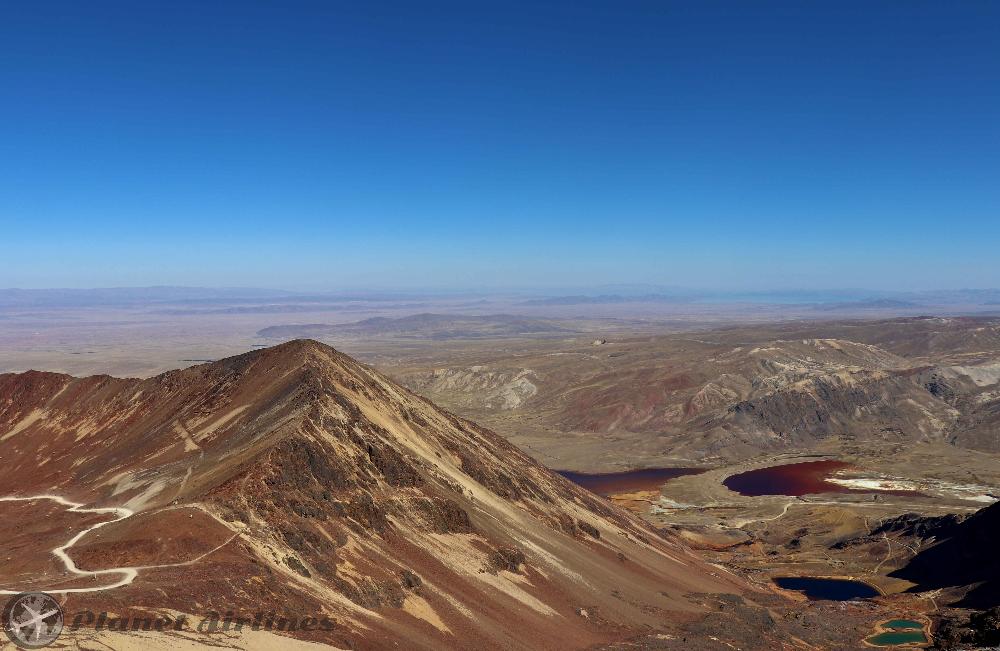
Firstly, when arriving to La Paz, most travellers arrive by air or bus. The Airport is located 15 Km from La Paz city, which makes for a 30 minute ride. Taxis are the preferred way of transportation. They cost 100 Bon to take you to your hotel. There is also a "combi", which is a van, number 212, which leaves daytimes every 5-10 minutes to the city centre for only 5 Bob. It will drop you off close to San Francisco Church. (Note that if you have luggage it can be hard to walk later up the streets in La Paz). If you arrive by Bus, the main terminal is located 15 min walk (up/down hill) from the city centre. Again a taxi would be the preferred way to get to your hotel if you have luggage.
Once in La Paz, much of the city is walkable, though hillsides may be challenging. Buses and mini-buses operate along many routes, and plenty of taxis are available. There is also an interesting way of public transport, the cable cars (Mi Teleferico) that for many, will look like tourism attractions in themselves. Taking the cable car is fun, safe, cheap (only 3 Bob one way) and reliable. There are 11 lines which to choose from, many which are linked. However, each time you take a different line, you need to exit and pay a new fare. The most popular lines to take are the red and yellow line. You can view the map below via the link.
Local transport is extremely cheap. That said, the bus system can seem incredibly chaotic for the uninitiated, making taxis the better bet in most cases. Also note the busses which operate in La Paz, are very old, emitting a lot of pollution.
✔️Tip: Travellers should carry small denominations of money if you take local busses, taxis or combis, as often locals are unwilling or unable to give change for large notes. The same advice applies to shopping and sightseeing. Practically everything must be paid in cash. Taking tours is the best way to see the outskirts of La Paz, enquire at the many agencies which are located in the historic centre.
❗Attention: Taking transport in Bolivia requires some patience and understanding. Most services can run delayed or suffer from timetable alterations last minute. This is related to taking busses mostly, but can also affect flights when the weather is bad.

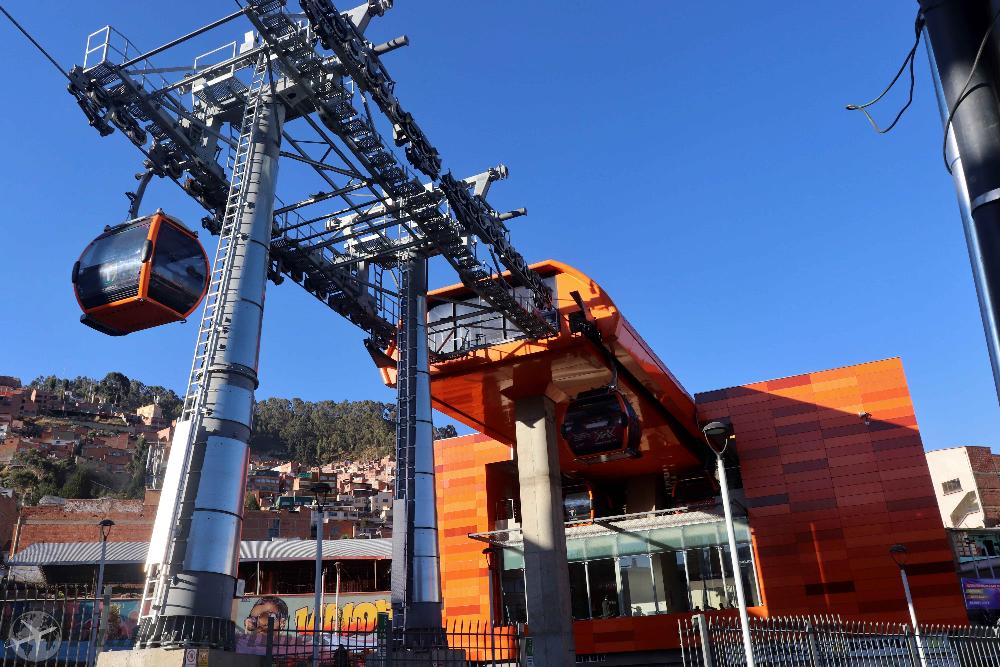
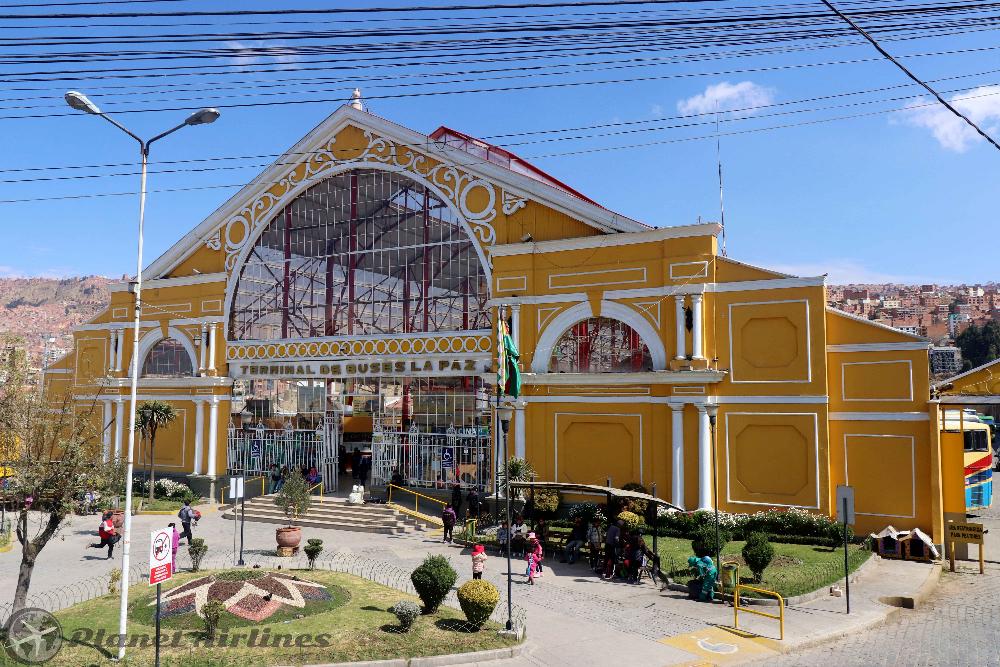
La Paz, or Nuestra Señora de La Paz, is the administrative capital of Bolivia. La Paz is set in a canyon that was created by the Choqueyapu River, and it is surrounded by the high mountains of the Altiplano. It has many landmarks that belong to colonial times like the San Francisco church, the metropolitan Cathedral, the Plaza Murillo, and the Jaen Street. While in the city, you must visit the Witches’ Market and enjoy many beautiful views. One of the main curiosities about visiting in La Paz, is that people-watching from café windows and sampling local delicacies are popular tourist activities. This is because of the interesting mix of people from the local rural areas coming to the cities to sell natural products, traditional clothes or souvenirs. They all mix with a hectic city where business is open as usual.
Other attractions include the Mi Teleférico cable car public transport. Tourists can choose from a number of walking tours, which take in the main sights and landmarks. Additionally, there any many tour agencies that can organise tours to see the outskirts of the city and the nature which surrounds the city. Don't miss out on these tours!
Below you will find some of the highlights to see and do during your trip in La Paz:
- El Centro (Downtown): the centre of La Paz, is located around the San Francisco Church, in the 6th district and is where most tourists stay, due to its easy access to the city’s main attractions. The Plaza San Francisco area has countless souvenir shops, hotels, and restaurants. This is the old historical centre of La Paz. Also visit, Calle Jaen and Plaza Murillo, historical landmarks of the city. However, if you want to see the governmental centre, and see the “real Bolivia.” Walk down Avenida Mariscal Santa Cruz, you’ll see the city’s true downtown with most of the important government buildings, the city’s best museums, oldest churches etc.
- Iglesia de San Francisco (San Francisco church): People congregate in this imposing church's plaza, which is a mixture of neo-classical Spanish and mestizo architecture. Construction began in 1549 and only finished in the mid-18th century. Often, travellers will see colourful Quechua or Aymara wedding processions on Saturday mornings, leading to and from the church. Visitors can climb the atmospheric stairway to the fabulous rooftop and enjoy the great views of the city.
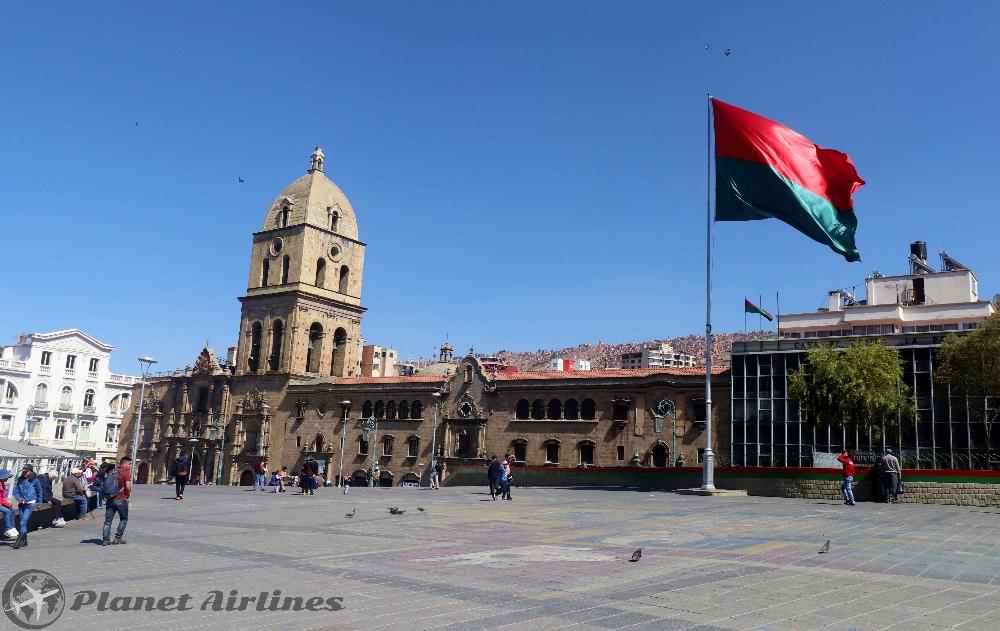
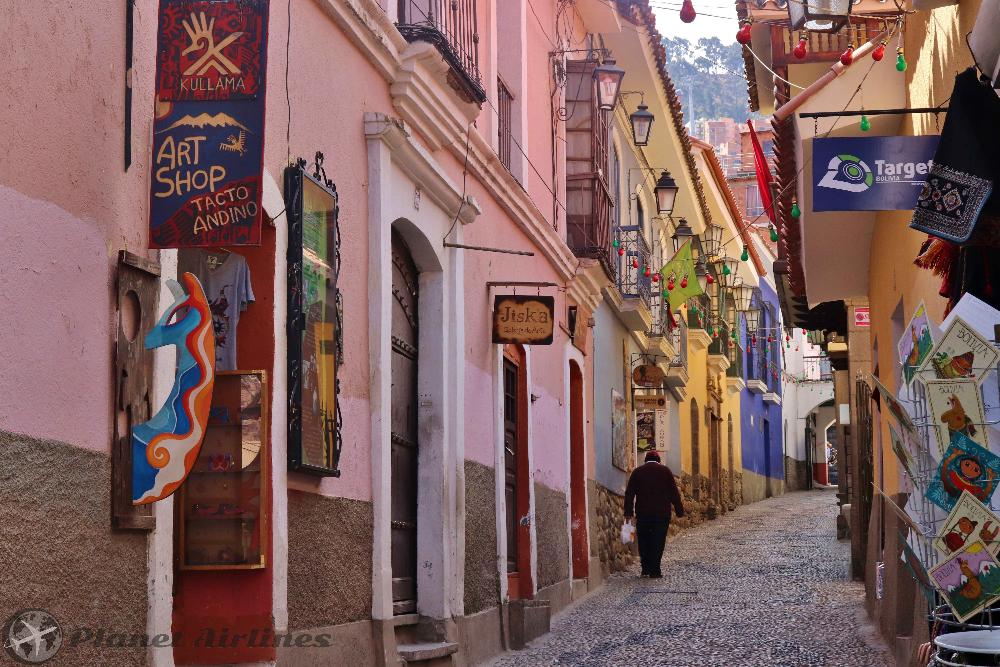


- Mercado de Brujas (the Witches' Market): It offers tourists a truly Bolivian experience. Situated in a maze of narrow alleys in La Paz, it stocks an unusual collection of merchandise, including charms, potions, and herbs used in Aymara traditions. The traditional market scene stretches around it, selling a huge a variety of everyday goods, as well as Andean art and handicrafts. Visitors can expect to see yatiri (witch doctors), who wear dark hats and carry pouches of coca for fortune telling.
This is the best are to visit for the tourists, as around it, you will also find plenty of restaurants, cafes, tour agencies, ATM's and convinicence stores.
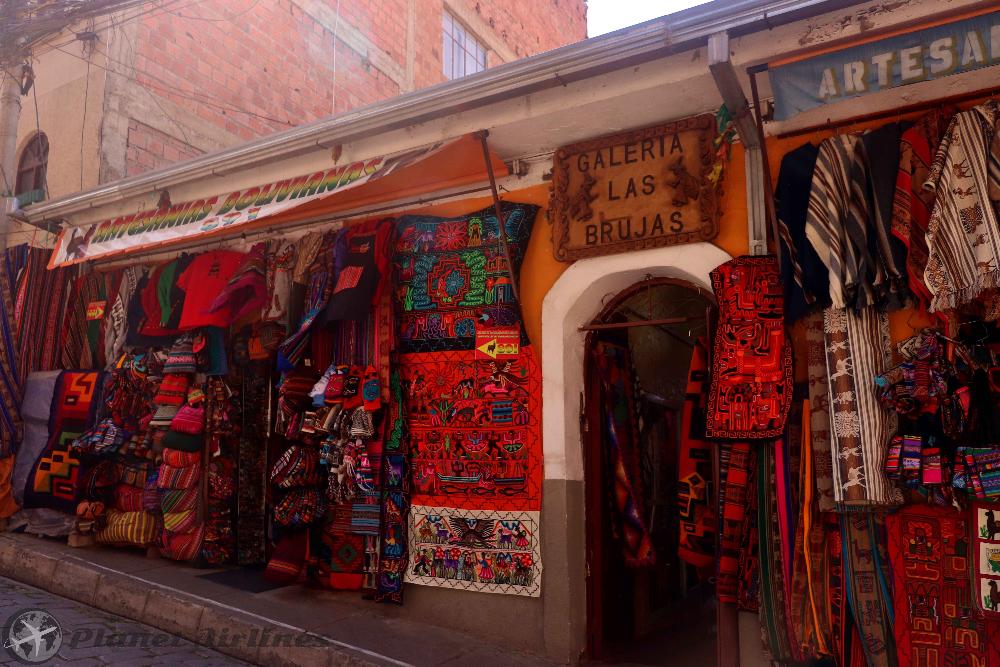


- Coca Museum: The museum covers the role of coca in Bolivia's culture and traditions. Visitors will learn about the leaf's healing properties, its use in Andean religious ceremonies, its chemical breakdown and different species. They will also canvas its use by soft-drink and pharmaceutical companies, and how it is turned into cocaine. Actually, one of the institution's missions in to counter the plant's cocaine-related stigma. Among other things, guests will leave knowing how to correctly chew coca leaves, which will allow them to feel its stimulating effects.
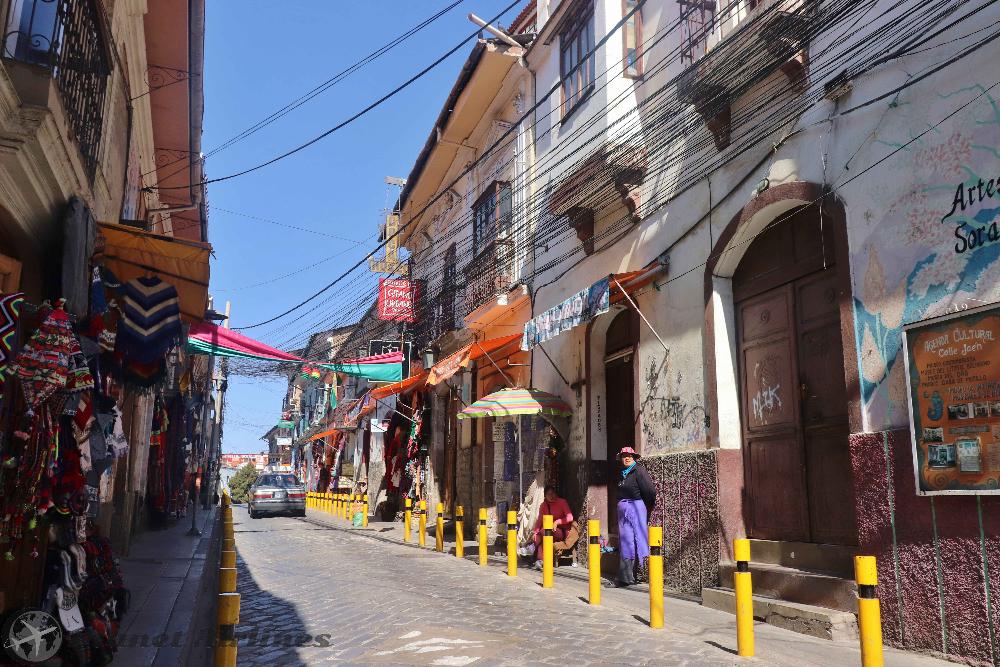
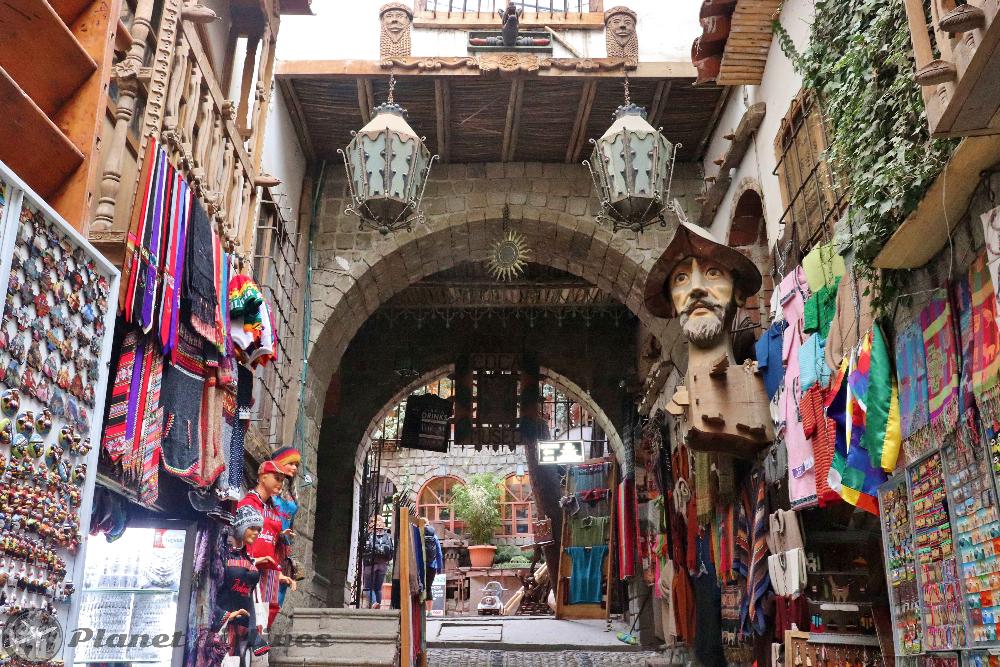
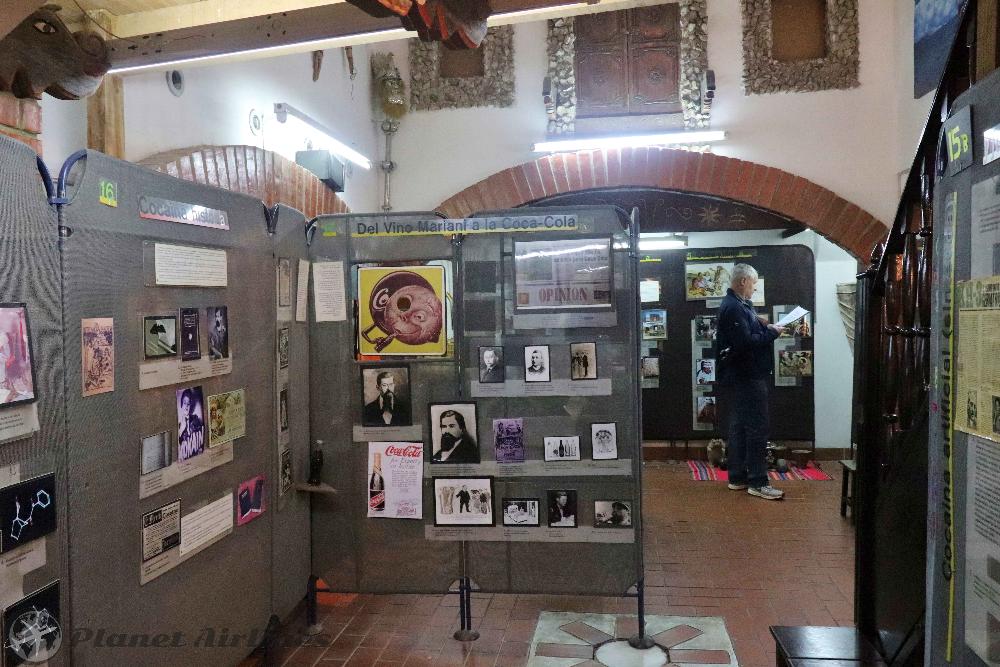
- Killi Killi viewpoint: This impressive place offers a some great views of the city and the mountains around La Paz. The best thing, is that it's free to reach and see but the hardest part is getting there! The Cerro Killi Killi 📍 is an uphill walk from the city centre for about 20 minutes and the last street is again quite steep. Taking a few stops along the way to recover your breath is advised. The views are worth it though! At the top there are benches with shade and some handicraft stalls.



- Cable Car self-tour: One of the most interesting facts about La Paz, is its altitude. Therefore the best way to see the city is ironically from even an higher altitude, but on board the comfortable and convenient cable cars which travel across the whole city. As mentioned in the transport of La Paz section in this guide, the cable cars actually function as a public transport mode more than for tourist purposes. Prices are cheap, at only 3 Bob per ride, but you need to pay the ticket each time you change the colour of the line, as they don't interconnect. Note that station names are in the original "Quechua" language and in Spanish. The best time to take them are from 10am to 4pm, during the evening some lines can get extremely busy and queuing to enter the lines, is normal.
The suggested itinerary is one hour by Cable Car, without stopping. Start from the Central Station and take the RED line to 16 de Julio, as you ascend, pay attention to the car which remains trapped between the cliffs!. When you reach the last station, get out and change line. (At this station there is a big market at the weekends, Mercado El Alto). Take the PLATEADA line (Silver line) to the last stop, Mirador. Here change for the YELLOW line and take it to the last stop also. (the yellow line passes Sopocachi, a tourist area for bars and restaurants). At the station Libertador, you connect to the CELESTE line (bright blue line), only travel one stop, to connect to the WHITE line at San Jorge Station. Take the white line all the way to the end at Villarroel station. The last trip is taking the ORANGE line which takes you back to the main station.
Below you will find the map available to download with the cable car colours and station names.

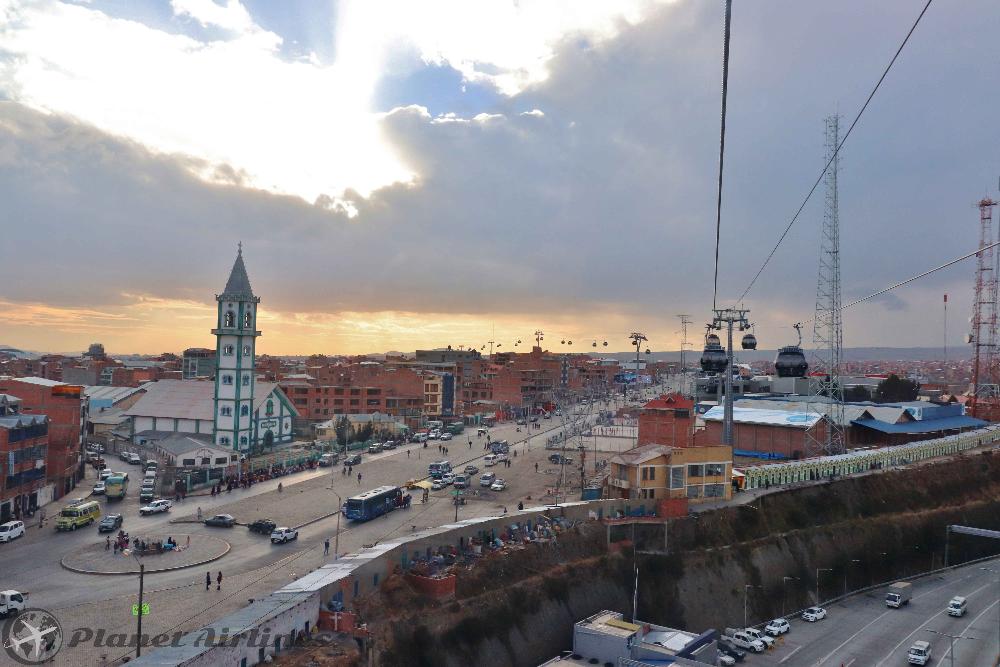

- Sopocachi: This is the bohemian district of La Paz with a mixed of grand colonial mansions and towering modern apartment blocks. There are many upscale restaurants, cafés, bars, and nightclubs. Getting here can be done by Taxi from the historical city centre, for 10 Bob. 30 Min walk from the historical city centre or by taking the cable car (Yellow line) and getting off at Sopocachi station.
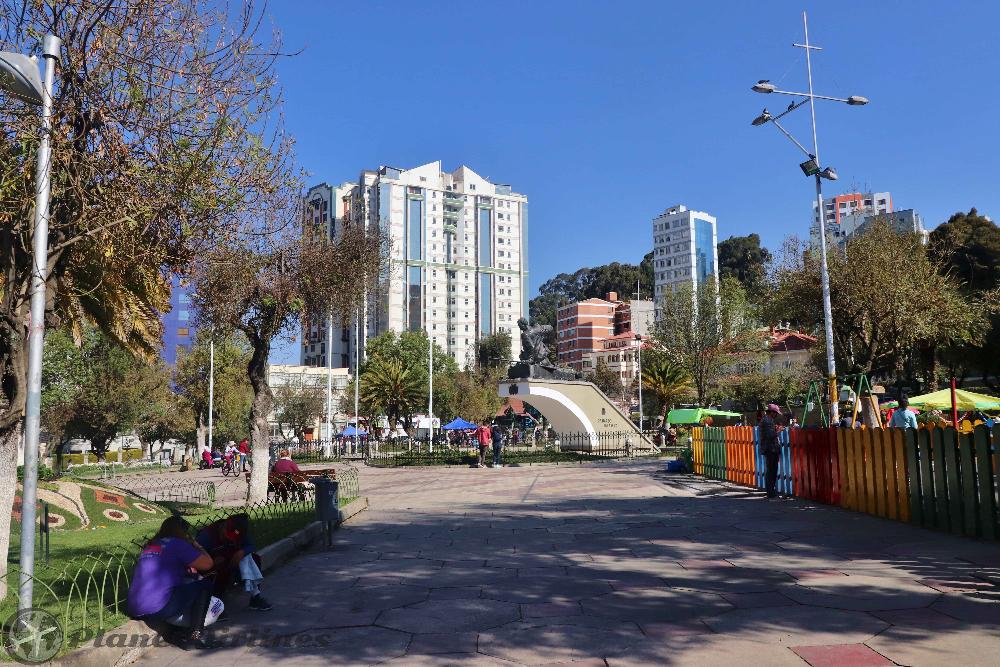
- Yungas Road: This is not an attraction for the faint hearted. Dubbed the 'El Camino de la Muerte' (Death Road), it stretches between La Paz and Coroico and had claimed 200 to 300 lives every year until 1994. Paraguayan prisoners built the road during the 1930s Chaco War, and it has extreme drops of up to 609m. The Yungas Road has since become a popular tourist destination among thrill seekers, particularly mountain bikers. It still remains dangerous, though the amount of traffic that passes is minimum nowadays. (trucks can have serious problems passing each other). Crosses mark where cars have plunged off the steep cliff. Drivers on Yungas Road must obey a strict set of rules, as rain and fog often reduce visibility and there are no guard rails. Contrary to normal Bolivian driving rules, drivers keep to the left, and uphill vehicles always have the right of way. Yungas Road has been upgraded with many new safety measures in the last decade, but the original route, now called North Yungas Road, is still in use by tourists.
The best way to experience the road is by a tour. Several tours are available, the best one by bike. The companies take you up by van and the downhill is done by mountain bike. Price of the tour is around $65.Prices include all the profesional gear for the bikes, snacks and drinks, photography taken by the guide. At the end of the bike ride down you get to relax in a hotel with a pool, where a buffet meal is served and you get a T-shirt of the death road as a gift. Prices can vary according to the type of bike used. It's advised to get one with double suspension for more comfort.
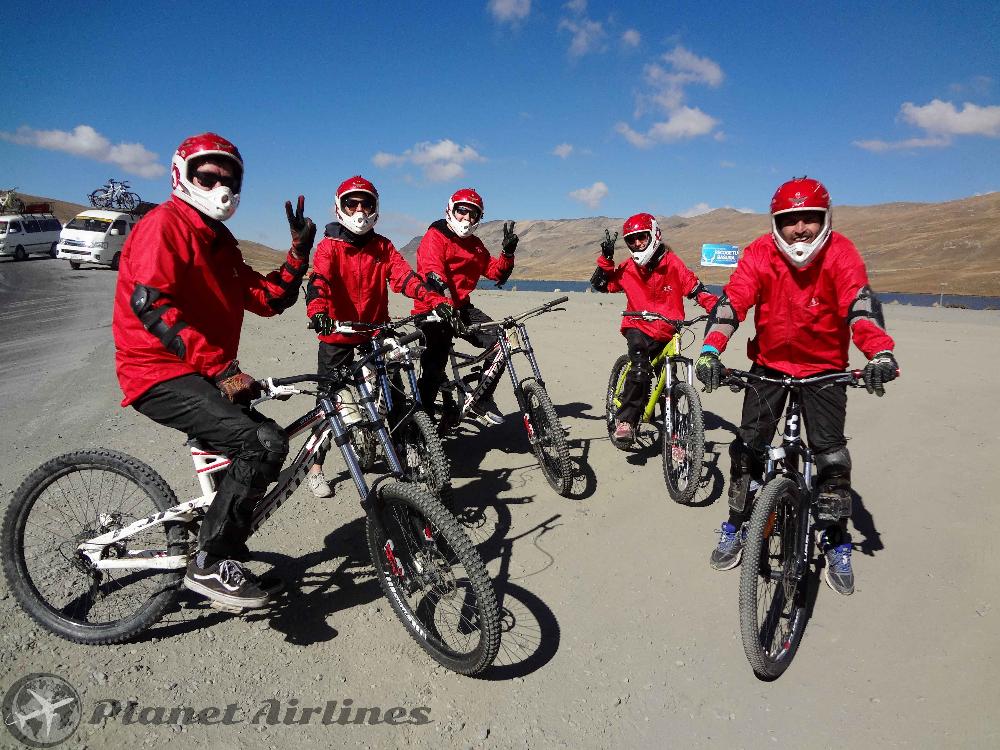
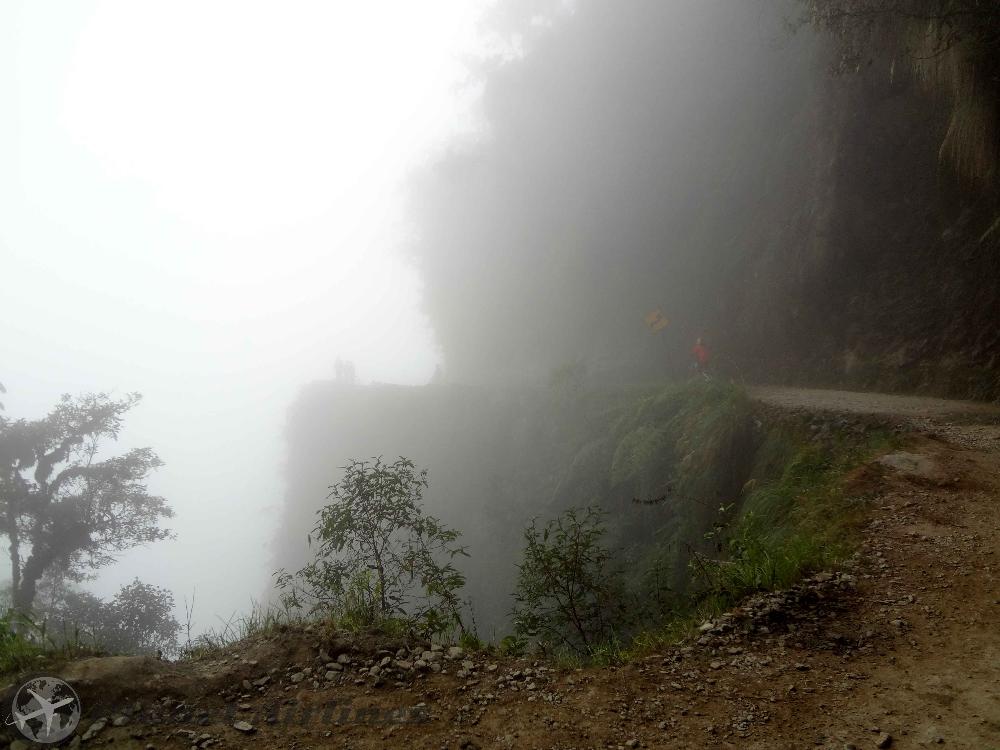
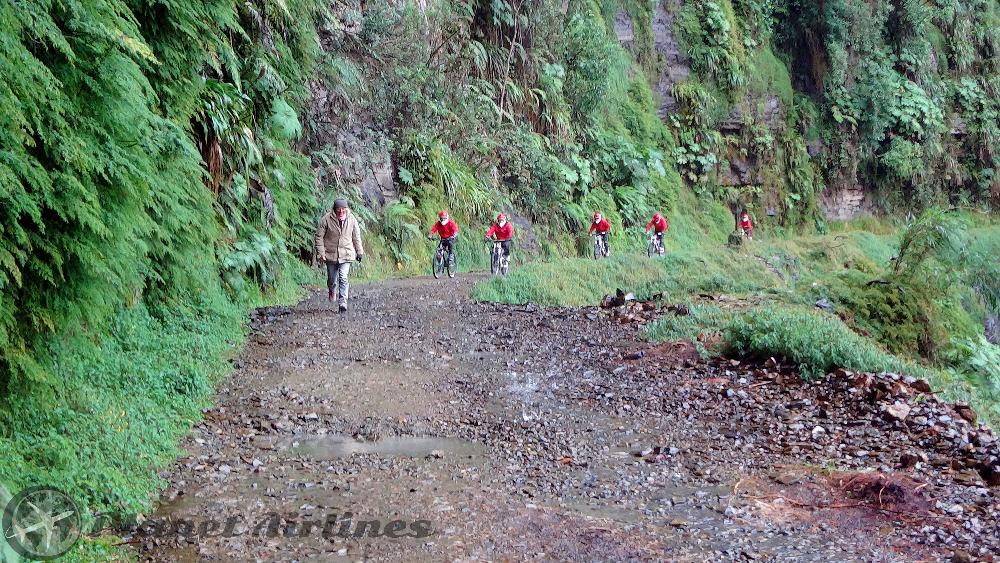
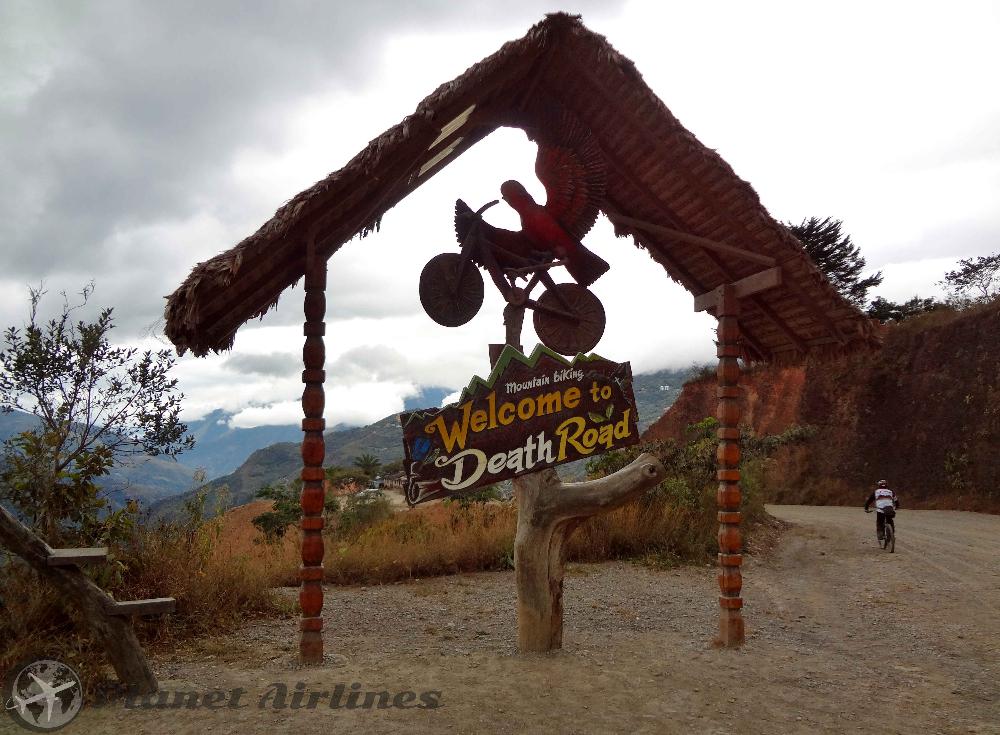
- Huayna Potosi: Potosi: Located in the Cordillera Real, mountain range, Huayna Potosi is a tremendous stop for adventurous travellers. The mountain is a mere 24 Kkm north of La Paz and only around 1,000 people a year make it to the summit. Many of those who attempt the climb turn back due to cold temperatures and the high altitude. The climb can be done in two daily stages and several difficult snow and ice routes go up the face. Those who make it to the summit will be rewarded with breathtaking views over the Cordillera Real mountain range, Lake Titicaca and La Paz. Note this trip is only recommended for professional mountaineers and physically fit adventurous people ready to take on challenges and adventure.
✔️Tip: Because of the degree of difficulty climbing the Huayna Potosi, it's best to take a tour to Chacaltaya, which offers great views of Huayna Potosi mountain. (see below)
- Chacaltaya: located at 5,300 above sea level, it once was the highest ski slope of the world in the past, but with time the glaciers which were there have retracted so much to have nearly disappeared. Now the accessible mountain peak is one of the most majestic viewpoints of Cordillera Real, from where it can be seen the snowy peaks of Illimani, Huayna Potosi, Condoriri, Illampu and part of Lake Titicaca. In this majestic place full of landscapes you can make a climb to 5,400 meters and see fossils along the way. To reach the summit, it's only possible to take tours.
Tours to Chacaltaya are cheap, less than €10 per person for a full day tour. Tours pick you up and drive around 2-3 hours till they reach the summit of the mountain. The majority of the road is gravel and dirt tracks. Once you reach to the top, the last 100 meters is only accessed by walking.
❗Attention: When walking at 5.300 meters to reach the last 100 meters, one should stay hydrated and take the slope in small steps, calmly and slowly. The limited oxygen is noticeable and sign of height sickness can appear easily if you are not prepared.
Chacaltaya Photo Gallery:
- The Moon Valley is another stop which tours include when you visit Chacaltaya. The trip crosses the entire city to the south of La Paz, where you can admire the Valley of the Moon and its incredible geological formations. In the prehistoric times the area used to be a big lake, after million of years, the eroded Valley takes this name because of its bizarre, moon-like landscape. The Valley features a few kilometers of walking paths that navigate the huge stalagmites and trenches of the valley, carved out of the soil over centuries of erosion by the wind and rain. In addition to its fascinating geology, Valle de la Luna, its name in Spanish, offers impressive views of the Andes Mountains of the Cordillera Real outside the city.
Moon Valley Photo Gallery:
- Coroico: a relaxing, low-altitude spot where visitors can escape frigid highland nights. The trip from La Paz traverses the Yungas Road, which makes for a photogenic and adrenaline-charged entrance into this laid-back resort town. Perched on top of the peak of Cerro Uchumachi, Coroico offers gorgeous views of orchards, forested canyons, cloud-covered mountain tops, and the snow-capped peaks of the Cordillera Real mountain range. Coroico is a good base for some interesting hikes into the jungle and for mountain-biking trips into the local area, including guided descents of the precipitous highway. You can organise your tours from La Paz city centre via the many travel agencies around the main squares.
If you are spending a week or more in La Paz, you will probably hear a lot about these two areas, Tiwanaku and Sun Island or Isla del Sol in Spanish.
- Tiwanaku, is a Pre-Ican town located 20 km south-eastern shore of Lake Titicaca, or 75 Km from La Paz. The area has grown in popularity for being an important Pre-Columbian archaeological site of Tiwanaku culture. There are ruins of the ancient city, known as, Kalasasaya and other important buildings; Puma Punku, Door of the Sun, Monolito Ponce, Keri Cala, Putuni, Laka Kollu, the Akapana pyramid and Wila Pukara, which served as residence to the priestly elite. Many constructions of Tiwanaku architecture have not been maintained due to the low resistance of the adobe (Mass of mud and straw, molded shaped bricks) against severe weather conditions in the highland region.
Getting to Tiwanaku can be done by tour or alone. If you decide to do it yourself, knowing some Spanish will be useful and taking small change. Near the Cementerio General (the city's largest cemetery) you will find some minivans, which have the destinations written on the window. They normally charge Bs. 15-20 one way. Be sure to ask them if they go to "las ruinas de Tiwanaku" because some of them will take you only to the town itself, which is about 2 Km from the actual site of the ruins. Note that the minivans usually are a tight fit, and can make many stops as needed per passengers hoping on/off the entire trip, taking from 1 to 2 hours. Another option is taking a regular bus from the city terminal at La Paz. They cost 50 Bob one way and are more comfortable but have less frequencies, so finding out the timetables is a good option beforehand.
- The other adventure is to travel to Isla del Sol. This island is a tranquil little escape from the hustle and bustle of South America. The island boasts a stunning landscape, typical island life, everything is laid back and moves at a slower pace. There are some great hiking trails, incredible lookout points, Incan ruins, free-roaming livestock, interesting places to stay and loads of local culture & tradition. Isla del Sol is located within the Lake Titicaca, considered to be the highest navigable lake in the entire world. It’s also South America’s largest lake.
Getting to the Island is exclusively by boat. The most common and easiest way is from Copacabana. There are only two ferries each day, at 8.30am and 13.30pm for 20 Bob one way. Hence, you must first make your way to Copacabana on mainland Bolivia (regular busses for 50 Bob from La Paz).
✔️Tip: Because of the long distance, it's advised to stay in Isla del Sol or Copacabana overnight to break up the journey. From La Paz it can take 4 hours one way to Copacabana.
La Paz’s club scene isn’t the most cutting edge, moreover, with numbingly generic Latin pop, rock, salsa, cumbia and Eighties music commonplace. You’ll find genuine Latin jazz/salsa, Brazilian, world, reggae, house, hip hop, techno, drum’n’bass and rock music places around the city.
Low alcohol prices, all-night dancing times and an all week scene of late night entertainment make La Paz, an interesting place for those seeking to mix with locals and absorb the local vibe.
Friday nights, however are the best for crowds and when most local people will hang out. The party usually starts around 11 pm and ends when the bars close early in the morning. The hottest area for a night out is the Sopocachi district, especially around Plaza Avaros, a popular spot for locals.
You can also check out the busy streets around Plaza San Francisco where many restaurants and bars gather offering home-like feel pubs.
❗Attention: Late evenings and nights are when pickpockets and thiefs take opportunity of tourists out and about drinking and being less careful on belongings.
It is safest not to walk around alone at night in the city and ONLY official, pre-ordered or radio taxi cabs should be used. Don't walk alone in isolated areas, with little or no people. If someone in a bar or club invites you out alone or insists in taking you somewhere else, immediately refuse. People who tend to be too pushy or direct can be fake, and this can be because they are after your money, obtain personal information from you to know where you stay and then steal or mug you.
Shopping in La Paz is as easy going as many other things that you may do in this historic city. Walk through the stalls, which are located in various areas of it, or visit the many shops in the heart of the city. On the paved streets of Calle Linares, Mercado de Las Brujas, or the Witches Market, you'll find Bolivian food, ethnic items, and many other things of interest. Take note that many shops are actually stalls, street side markets, floor sellers and many more basic ways of selling all kind of items. The most popular places for shopping in La Paz are divided in the following list:
- Mercado Artezanal: This market in Calle Linares sells a huge variety of handicrafts at various prices. The goods are arranged neatly, so that potential buyers may browse at their own pleasure.
- Witches' Market: The Witches' Market is the most common gathering spot for all locals in La Paz. Situated on Calle Jimenez and Linares, locals go to the Witches' Market to get llama fetuses and dried frogs for Aymara ceremonies, soapstone sculptures and aphrodisiacs. The market displays its clients' herbs, folk medications and a diversity of unique items used to control the many spirits that occupy the Aymara world.
- Sagarnaga Street: For distinctive Bolivian souvenirs, particularly merchandises made from the wool of llamas, alpacas, and vicuñas. There is an immense variety of silver jewelry, handicrafts, etc. Wood sculptures are few and far between, as they take a lot of time to carve.
- Ayni: More than thirty craft workshops sell high-quality products in Ayni Market La Paz. There are more than 200 families of artisans making and selling things that provide them with decent work, a safe environment. Their goal is to improve their living conditions through Fair Trade.
- Mercado Negro: La Paz’s Mercado Negro, is a tourist attraction in itself. An extensive network of quirky market stalls, black market goods, along with everything else under the sun. It’s one of the most captivating Andean bazaars ever for the variety and the amount of goods sold. Entire streets are filled with household goods and garments. You can begin shopping at the crossroads of Calle Max Parede and Calle Graneros.
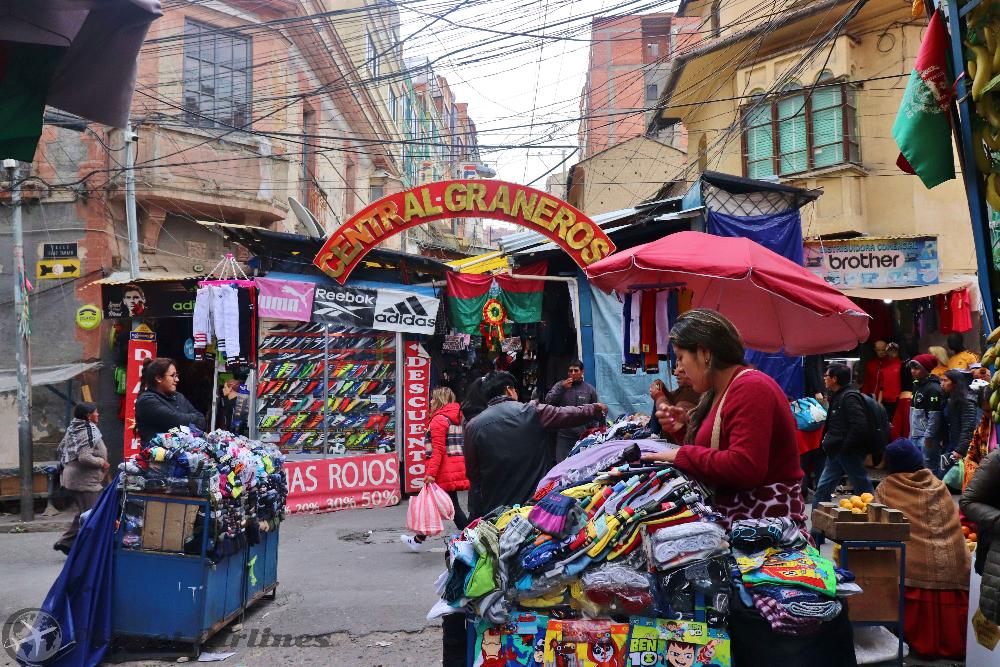
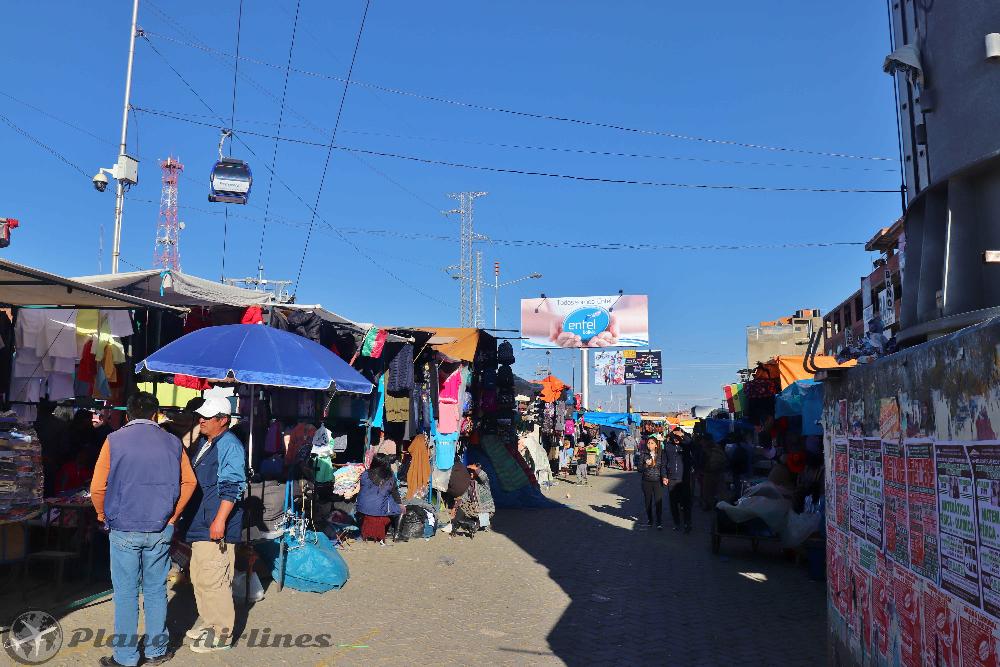

Staying in La Paz, as much as, all Bolivia is not a major problem for all types of budgets. Even decent hotels are an affordable option to many spending conscious travellers. An average of $30 per room per night can be found in central hotels around the tourist areas and the city centre. Private homes, like Airbnb style, for shared accomodation is not as popular as other countries however the trend is slowing growing amongst locals to rent spare rooms.
However, you need to consider a few things before staying in local homes: Safety of the area, conditions of the property (locks, accessibility from outside..), reviews of the home and distance to city centre or attractions. Advice is given to spend a little more in a hotel with better reviews and a decent price, rather than the cheapest option. (for safety).
La Paz, like most of Bolivia, is an ideal destination for backpackers and the adventurous type of traveller. Therefore hostels, shared dormitory rooms and budget rooms are the primarily types of main accommodation you will in Bolivia, at good prices, but bare in mind, that such normal things like Wifi speed, hot water, electricity or heating might be limited or not available.
❗Attention: As in all South America, leaving your possessions lying around in the room after you go visiting is not advised. Even in private rooms and good quality Hotels, there are chances of robbery and theft, when people know there are tourists staying. (normally people outside the working hotel, but sometimes from inside). Always pack valuables/electronics/passports in your luggage and lock your luggage securely. Also don't leave windows open when leaving your room and if possible draw the curtains to avoid people looking in. If hotels offer a safe, it's also a good idea to use them, even they require a deposit.
The size of La Paz, might suggest that one would need whole weeks to explore the city. However, because the main tourist areas are well located together, to visit La Paz doesn't take long, theoretically. However, to walk and discover the city, implies some time to get used to the heights, and the streets being all up/down hill doesn't help much either. This makes for added tiredness and can make you, take many brakes when walking.
If you try to over do it and cover as much as possible in a short time, then you will most likely fall into height sickness.
The good news is that, thanks to the cable car system, you can travel around La Paz from the sky, and watch everything below and cover most of the city. Taking a round trip by cable car is the perfect activity to see most of La Paz from high above and get off at selected stations.
Not to forget, La Paz is not only city tourism, there are a many tours which operate to see the landscape, mountains, lakes, jungle and the "Death Road" for example.
The best advice is to give yourself 2 days to relax in La Paz first after arriving to get used to the height. Take one day to explore the city by Cable Car and another 2/3 days for the tours. Therefore 5 to 6 nights would be a nice time to complete the city calmly and recover energy for your next stop!
La Paz Photo Slide 📷

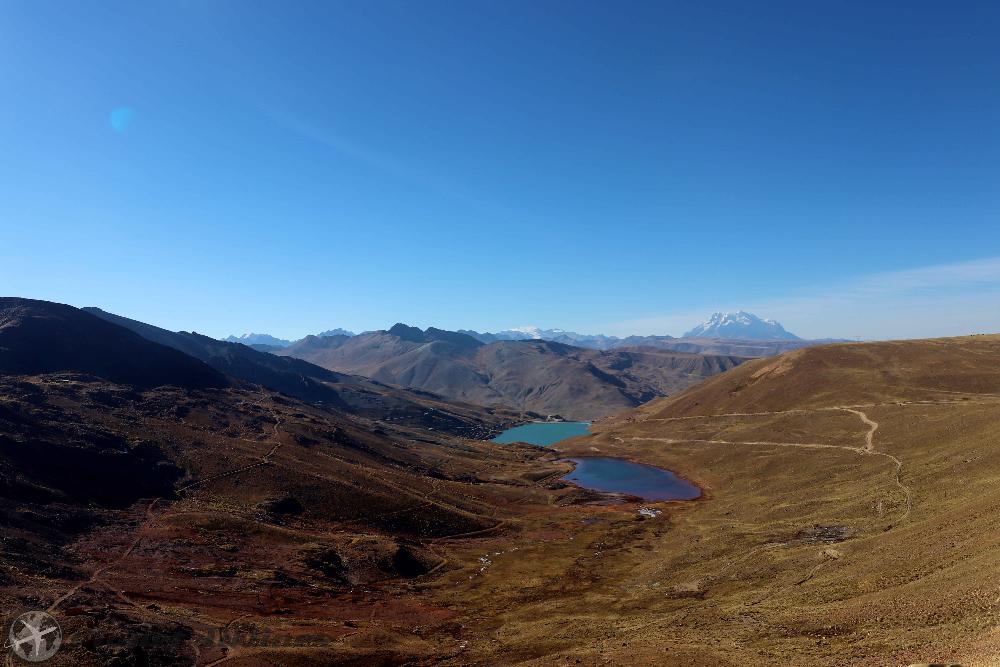




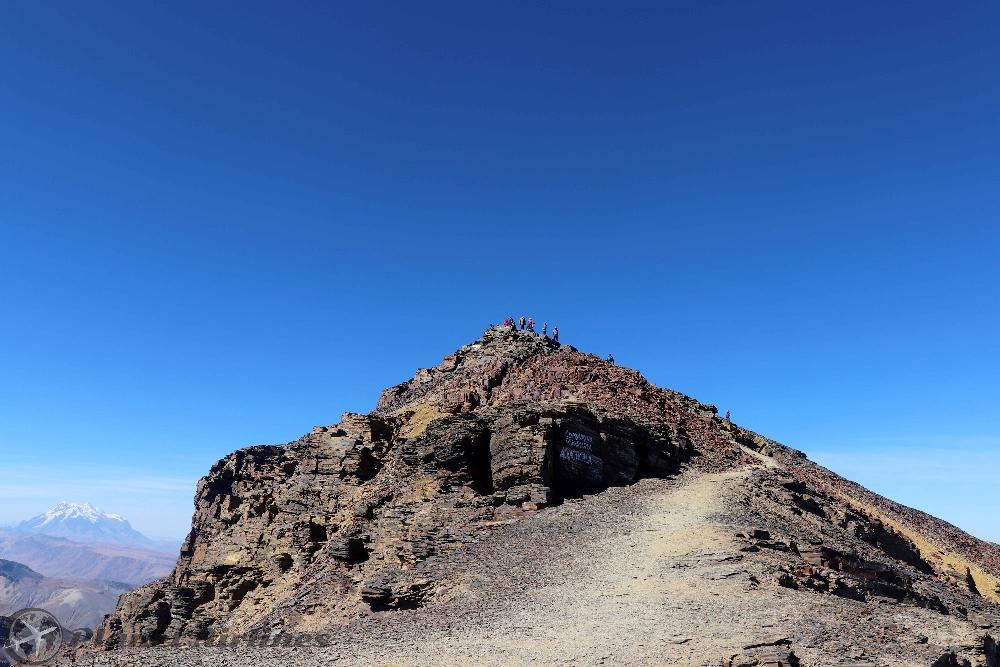


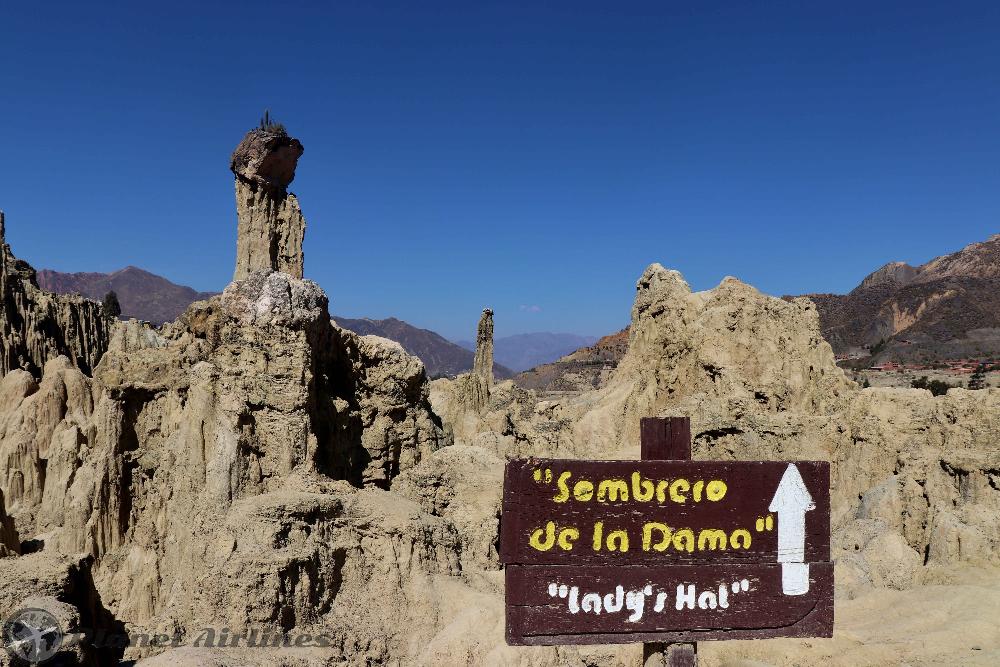
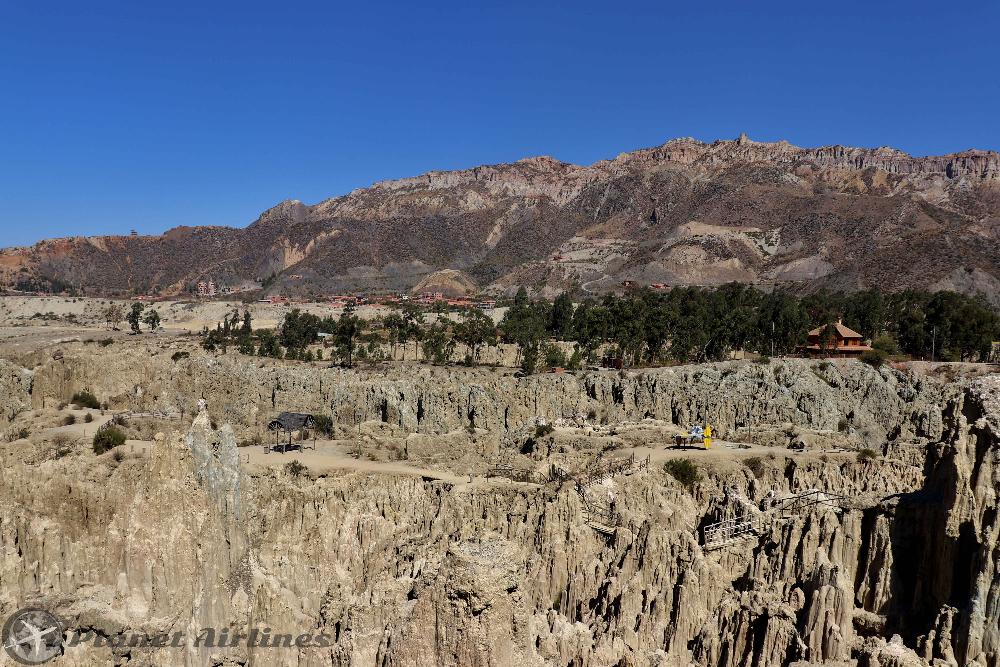


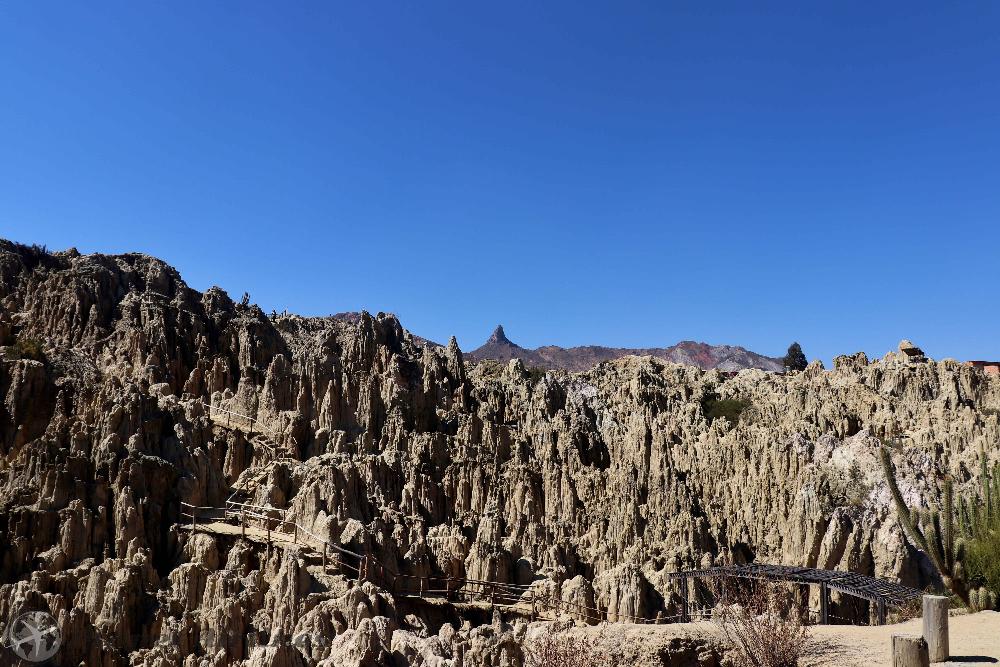





























.png)